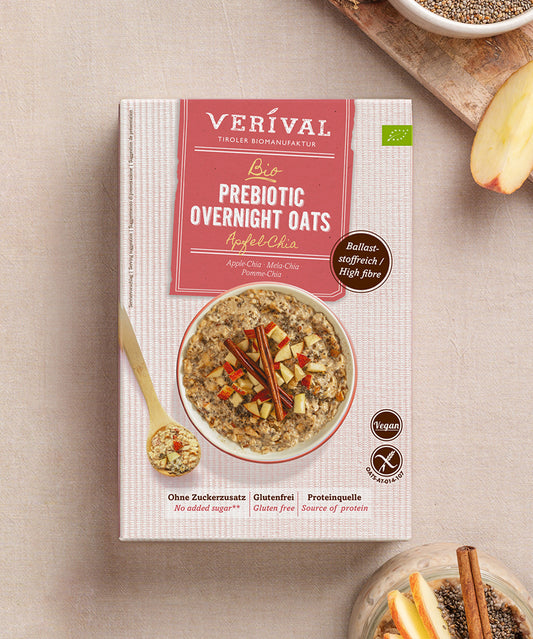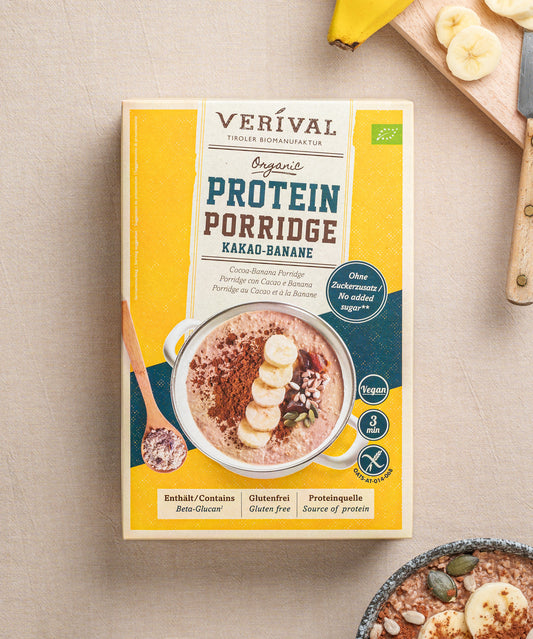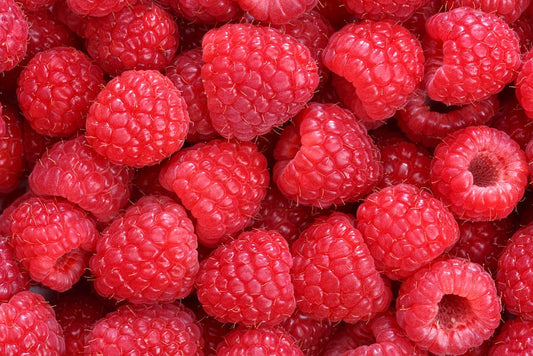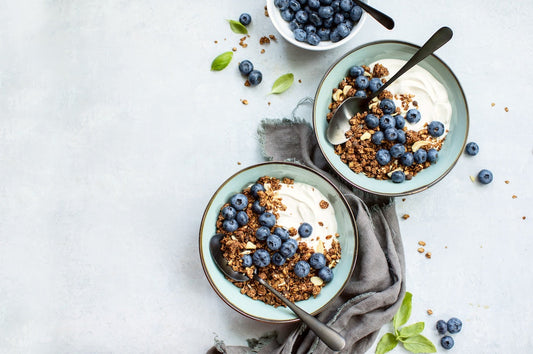When you hear the word fat, you probably quickly think of unhealthy junk food. That's not far-fetched – because junk food usually contains a lot of unhealthy fat. However, fat is one of the three macronutrients and is therefore essential for the human body. It all depends on the type of fat – think saturated and unsaturated fatty acids. However, the flood of information about the different fats often leads to confusion. We want to get to the bottom of this with this blog post.
It is especially important at breakfast to ensure a balanced, healthy diet. After all, this is how you start the day! How much fat is really healthy, what types of fat you should avoid and how you can incorporate healthy fats into your breakfast – we will answer all these questions for you now.
Discover healthy breakfasts from Verival
Is too much fat unhealthy?
This question is a double-edged sword. Basically, not all fats are healthy. There are fats that are harmful to the body. In recent years, however, scientific opinion has developed in the direction that too much fat does not necessarily have to be unhealthy. Here you should pay attention to what fats you consume. In any case, it is unhealthy to consume too many saturated fatty acids. Unsaturated fatty acids, which are found in nuts, for example, are considered to be the healthier fats.
Which fats are harmful?
You should be especially careful with saturated fatty acids. These are considered to be flavor enhancers and appetite stimulants. Saturated fat is found primarily in animal products such as butter, cream, sausage, cheese and meat. Saturated fats in large quantities can increase the cholesterol content in the blood and lead to constrictions of blood vessels. In addition, excessive consumption of saturated fats can increase the risk of cardiovascular disease, dementia and diabetes.
Trans fats are considered to be particularly harmful to the human body. This form of fatty acid is produced during the industrial processing and hardening of fats and oils. Trans fats are often found in margarine, ready meals, sweets, crisps and fried products.
Which fats are healthy?
Healthy fats are generally considered to be unsaturated fatty acids. This does not mean that saturated fatty acids cannot be healthy in the right dosage – they also function as messenger substances for our body. However, unsaturated fatty acids have other important properties.
First and foremost, a distinction is made between monounsaturated and polyunsaturated fatty acids. Monounsaturated fatty acids are found primarily in nuts. These fats enable the vitamins A, D, E and K to be utilized in the body. They accelerate wound healing and are good for teeth and bones.
Polyunsaturated fatty acids are an important building block for cell walls, help to maintain a balanced cholesterol level and are involved in controlling blood pressure. The most important subgroups are omega-6 and omega-3 fatty acids.
Monounsaturated fatty acids are found in vegetable oils such as olive or rapeseed oil, avocado or nuts, for example. Polyunsaturated fatty acids are also found in nuts and vegetable oils such as walnut or linseed oil, and fish.
How can you tell saturated and unsaturated fats apart?
If fat is liquid at room temperature, it is an unsaturated fat, as is the case with olive oil, rapeseed oil and sunflower oil. If fats are solid at room temperature, they are saturated fatty acids, as is the case with butter or the various types of lard.
However, there is one exception: coconut oil. This contains unsaturated fatty acids. Why is that? Coconut oil is usually solid in our latitudes due to the temperature. However, from around 25 degrees, the “fat” becomes completely liquid.
How much fat should you consume daily?
It is recommended that you do not consume more than 70-80 g of fat per day. It is generally better to cook with little fat and to avoid ready meals. Another important point is to watch out for hidden fats! These are often found in sauces, sausage or cheese. You can also steam food instead of frying it – in general, you should use visible fats such as butter or oil sparingly when doing so.
A hot tip from us: use less fat during preparation and finish off the food with a spoonful of oil after cooking! This brings out the flavor of the oil and adds the necessary amount of fat.
How can I incorporate healthy fats into my diet?
Incorporating the right amount of saturated and unsaturated fatty acids into your daily routine is not as difficult as you might initially think. Nuts, for example, are incredibly versatile and flexible in their uses. You can use them as a topping for breakfast bowls of all kinds, nibble on them as a snack between meals, turn them into pesto or use them in baking.
Chia seeds and flax seeds are also great for garnishing a variety of dishes. A few seeds sprinkled over bread, eggs, or yogurt are hardly noticeable and help you meet your daily requirement of healthy fatty acids.
Avocados are a real fat bomb in the most positive sense! They can be perfectly prepared in all kinds of ways and variations and provide an extremely large amount of healthy fats for the day. It should also be mentioned that healthy fats in the morning help you to feel full for longer. This also helps to maintain a healthy lifestyle.
For more suggestions and recipe ideas, we also recommend checking out the rest of our blog – we have a great collection of healthy breakfast recipes that might sweeten your day, such as our vegan chocolate avocado pudding with chia seeds:
Conclusion: Which fat is healthy – saturated or unsaturated?
Saturated fats are quite healthy in small amounts and important for our body. Unsaturated fatty acids, such as those found in vegetable oils, nuts or chia seeds, are considered fundamentally healthier fats.
























